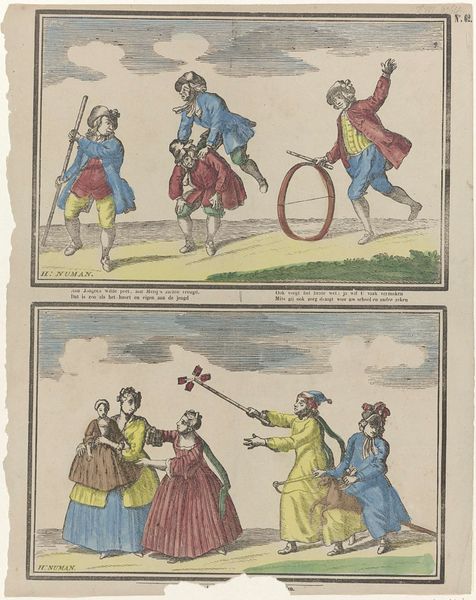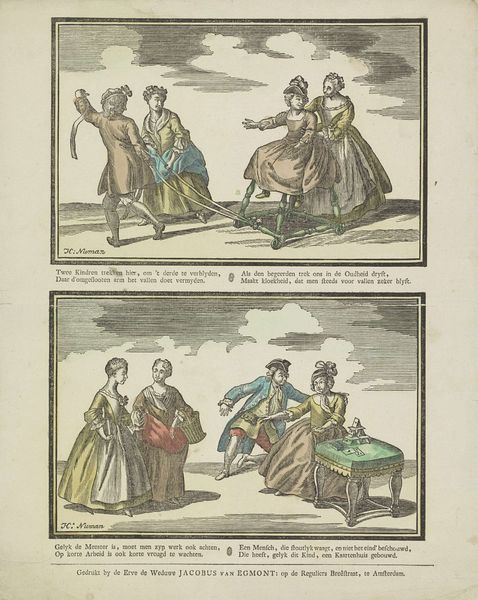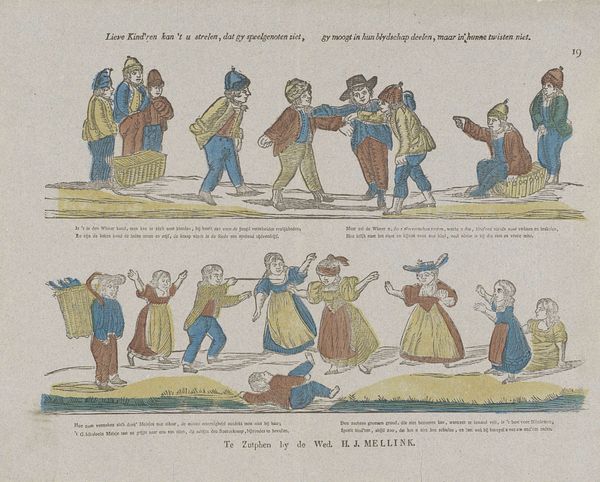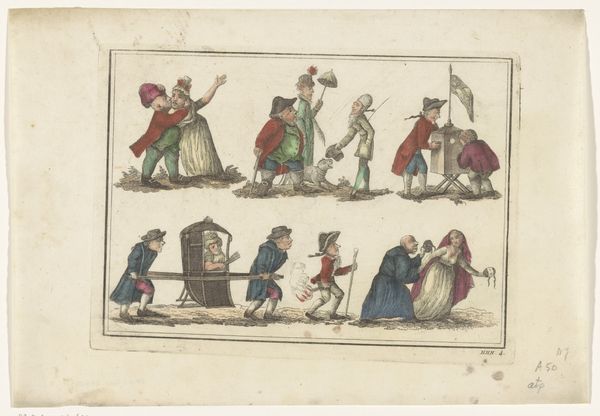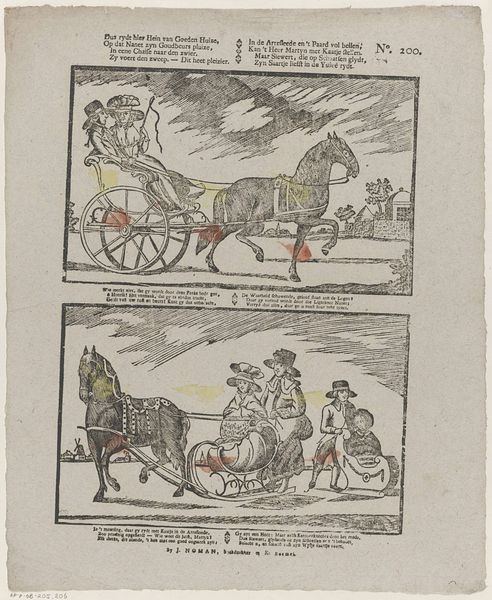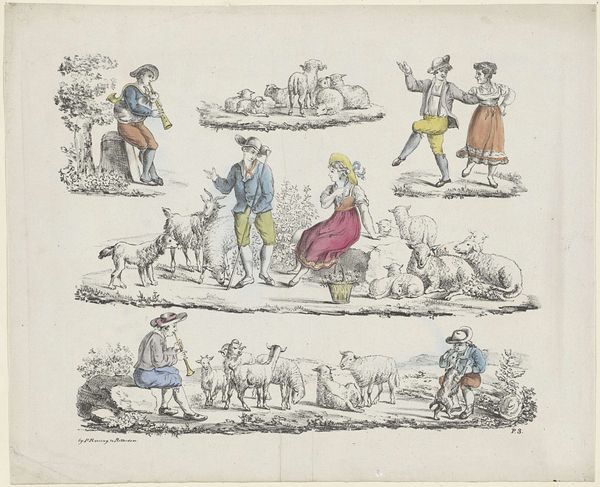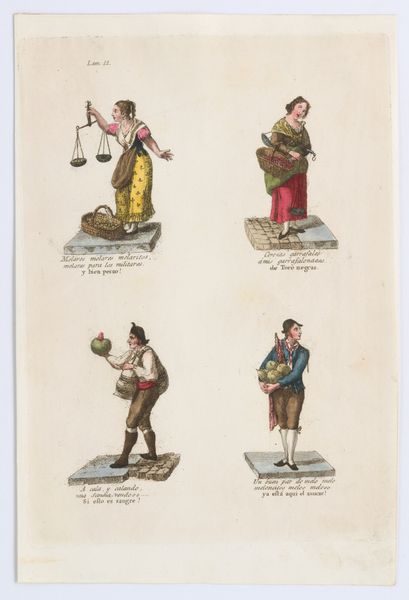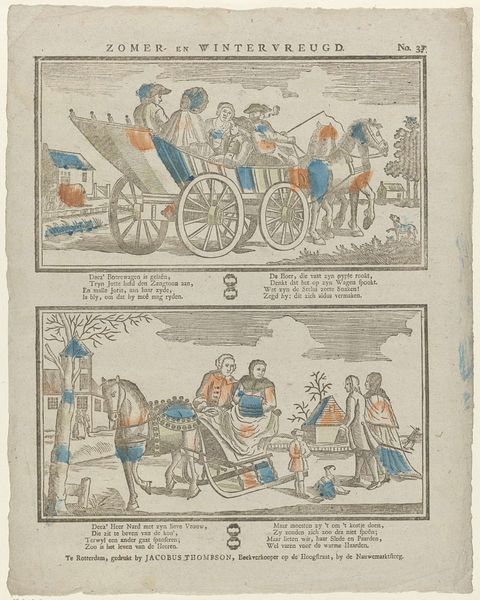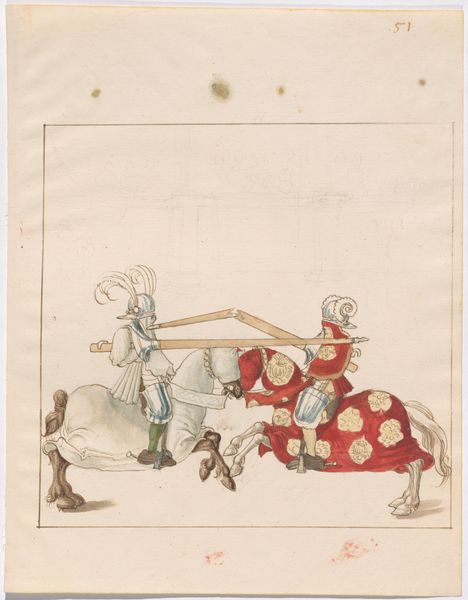
print, engraving
# print
#
figuration
#
line
#
genre-painting
#
engraving
Dimensions: height 395 mm, width 314 mm
Copyright: Rijks Museum: Open Domain
Editor: Right now, we're looking at "Kinderspelen," or "Children's Games," an engraving by Hermanus Numan, created somewhere between 1850 and 1870. I find the figures a bit stiff, almost like paper dolls, yet the scenes of play seem so lively. What captures your attention most when you look at this print? Curator: It's that delightful contrast, isn't it? A stiff formality attempting to capture the fleeting exuberance of childhood! I think Numan’s choice of the engraving technique, with its precise lines, is part of that. It’s like trying to contain chaos within a neatly drawn box. Do you notice how the games themselves feel a little…staged? Almost theatrical? Editor: Yes! They seem like little vignettes. Do you think that was intentional? Curator: I do. Remember, genre paintings like this often served a moralizing purpose. These weren’t just snapshots of fun; they were subtle reminders of proper behaviour, perhaps? Or perhaps, Numan wanted to immortalize this brief period of freedom and joy using the then modern medium of printing, while his lines betray an almost poignant awareness of time marching forward? After all, childhood never lasts, does it? Editor: That makes me see it differently. The stiffness feels less like a limitation and more like a…frame, containing something precious. Curator: Precisely! The ephemeral nature of childhood immortalized with a rigid artistic technique, almost trapping joy, like catching fireflies in a jar… A beautiful paradox, isn’t it? It is as though Numan wants the joy of playing never to cease!
Comments
No comments
Be the first to comment and join the conversation on the ultimate creative platform.
